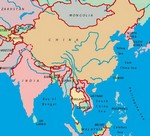Wind power creates sustainable energy, spurs on the economy by providing new jobs and helps reduce stresses on the environment, Stephen Molnar, the mayor of Tillsonburg, Ontario, said during a Global Wind Day tour of the Erie Shores Wind Farm.
“Actually, it’s been an extremely valuable experience,” Molnar said in a telephone interview with the European Wind Energy Association.
Molnar and other politicians were part of a tour Tuesday of the four-year-old Erie Shores facility in southern Ontario, which is described as being one of the largest wind power facilities in Canada, representing nearly 3% of the nation’s installed wind capacity.
Organised to celebrate the second annual Global Wind Day, the tour was proudly hosted by the Canadian Wind Energy Association (CanWEA), which quoted in a press release another local mayor as saying her nearby municipality has benefited greatly from wind energy.
“We sought this opportunity to bring positive change to our region, and have benefited from job creation and increased tax revenues, new tourism and our local farmers now have another source of income,” Lynn Acre, mayor of Bayham, which is home to the Erie Shores Wind Farm, was quoted as saying.
The press release also noted CanWEA President Robert Hornung said it is important to celebrate Global Wind Day in Canada.
“Wind energy is now being produced in every province and we expect wind energy’s rapid growth in Canada to continue with production quadrupling in the next five years,” Hornung said. “With its unparalleled wind resource, large hydroelectric capacity, strong manufacturing base and linkages to the US market, this country has an incredible opportunity to maximize the economic, industrial development, and environmental benefits associated with wind energy.”
A growing number of analysts in Canada, which is the second largest nation in the world and has a population of more than 33 million people, are promoting emissions-free wind energy as a solution to the country’s need for increasing amounts of green electricity.
According to the federal government, fossil fuel combustion is the main source of three major air pollution problems — climate change, acid deposition and urban smog. Canada ranks 27th out of 29 OECD nations in terms of energy use per capita, the government says. Canadians annually consume 6.19 tonnes of oil equivalent per capita. This is almost double the OECD average of 3.18 tonnes of oil equivalent per capita, and more than five times the world average.
 Rémi Gruet, Regulatory Affairs Advisor for EWEA, explains that such an overshoot could trigger the melting of permafrost soils: “Thawing soils would release methane – a gas more than 20 times more harmful to the climate than CO2,” Gruet says.
Rémi Gruet, Regulatory Affairs Advisor for EWEA, explains that such an overshoot could trigger the melting of permafrost soils: “Thawing soils would release methane – a gas more than 20 times more harmful to the climate than CO2,” Gruet says.






 Comments
Comments

